You are here
Rock paintings in Ak-Baur.
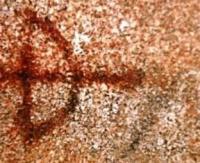
Archaeological tourism in Kazakhstan.
«Memory is the treasure house of the mind wherein the monuments thereof are kept and preserved»
Thomas Fuller.
Cultural heritage tourism in East-Kazakh province.
Ak-Baur rock paintings are located at an altitude of 534 meters above sea level, located on western slope of Ak-Baur hill, in upper reaches of Ak-Baur stream, in Kalba Mountains, 2.2 kilometers east of right bank of Urunkay (Sibinka) River, 5.3 kilometers to south and a little east of village of Sagyr (formerly village of Leninka), 3.7 kilometers to north and a little east of village of Besterek, 32.7 kilometers to south and a little east of town of Ust-Kamenogorsk, in Ulan district, in East Kazakhstan region.
The left side of the valley is occupied by a rocky bald peak (the Akbaur). It is made up of of diorite and wind erosion has created bizarre stone figures with overhangs and spacious niches. A grotto with rock paintings is located at the foothill of the southern slope of the Akbaur.
Despite its proximity to a main highway, a large regional capital and active visitation of the site by tourists, the grotto paintings and the surrounding landscape are well preserved. The Akbaur paintings were researched and documented in the 1970’s - 1980’s by Samashev Z. (Samashev 2006).
Transparent paper attached to the rock with plasticine, remnants of which still remain in large spots on the rock surface, were used to copy the paintings. In 1997 - 1998, the grotto was studied by a group of experts in archeology and astronomy led by Marsadolov L.S. (St. Petersburg).
In 2008, the Akbaru Valley and the grotto paintings were studied by Rogozhinskiy A.E. Remains of ancient habitation sites with stone tools, ceramics of early nomads and Neolithic flint artifacts were found at the wide mouth of the valley along the northern slope of the Akbaur.
Two or three compositions with horses, deer herds and humans are carved in a crust of desert varnish on an isolated rock detached from the massif. On the opposite side of the valley, a small concentration of petroglyphs is also carved on horizontal surfaces of shale covered with a brown patina.
Petroglyphs at both sites are similar in style and technique and date to the Late Bronze and Early Iron Ages (late 2nd – 1st millennium B.C.).
Typology and Dating rock paintings in Akbaur.
The grotto, located 5m above the surface, is easily accessible: inclined layers of rocks that compose the massif provide an ascent in steps. A wide oval cavity under the overhang is about 9m long and reaches human height only at the entrance.
Daylight penetrating through the opening is enough to see the paintings on the roof and internal walls of the shelter. The ground is inclined and rises to the wall so that one can only see all the paintings at once from the entrance; the height of the roof, where paintings are positioned, does not exceed 1m, so it is only possible to closely examine them sitting or lying-down on the uneven surface.
All figures (about 80) are painted in a reddish-brown ochre and are similar to each other, with linear drawing, simple shapes and unified compositions, suggesting their simultaneity. The paintings predominantly fill the even surface of the roof that resembles a large shell containing the most informative paintings: a two-wheeled cart with a pole facing the entrance, a goat, and two or three humans, as well as signs that resemble a primitive tent flanking the remaining paintings.
On the foreground, a rhomboid sign is divided into four sectors with a central dot in each next to a human figure; two lines branch out from vertices of this sign. Other paintings depict silhouettes and contour triangular shapes as well as lines connecting some images.
The composition borders are framed with cross-like figures. Archeologists use the two-wheeled cart to date the Akbaur grotto paintings to the late IIIrd - early IInd centuries BC. In any case, the Akbaur cart is the most ancient image of a wheeled vehicle in Kazakhstan and Central Asia.
Geographic coordinates of Ak-Baur petroglyphs: N49°40'32 E82°41'14
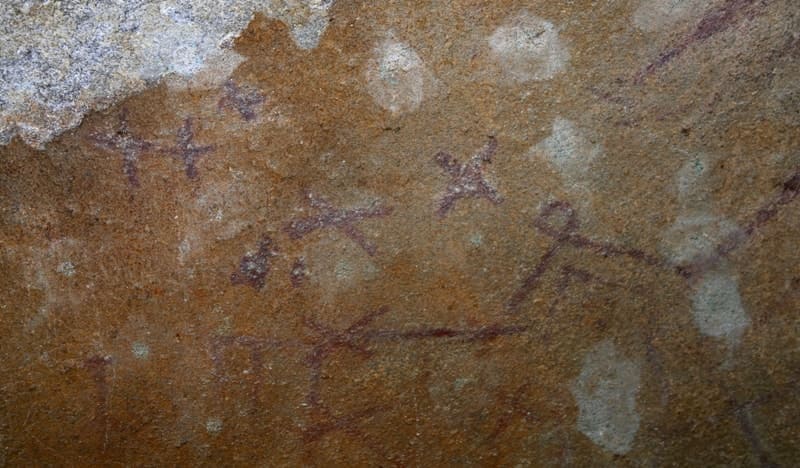
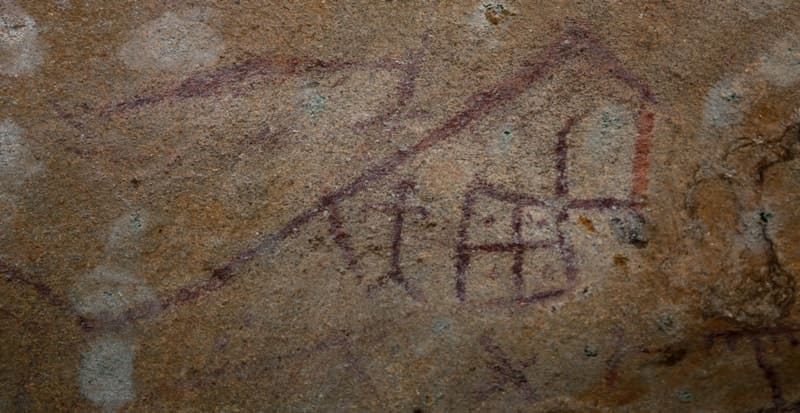
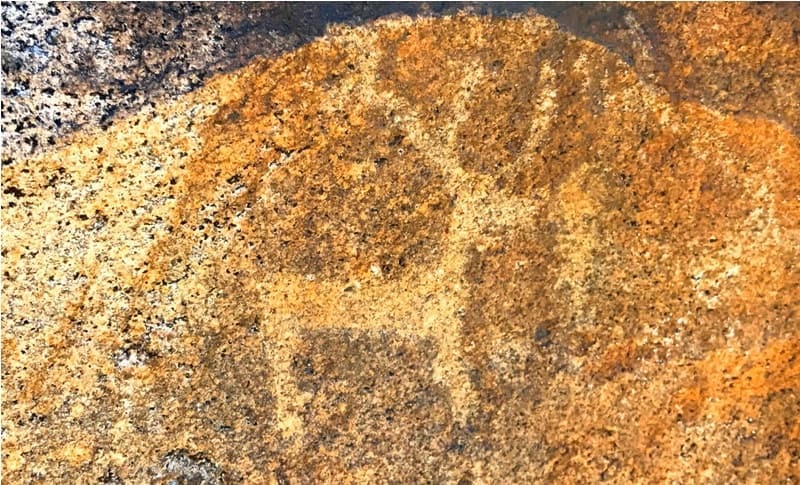
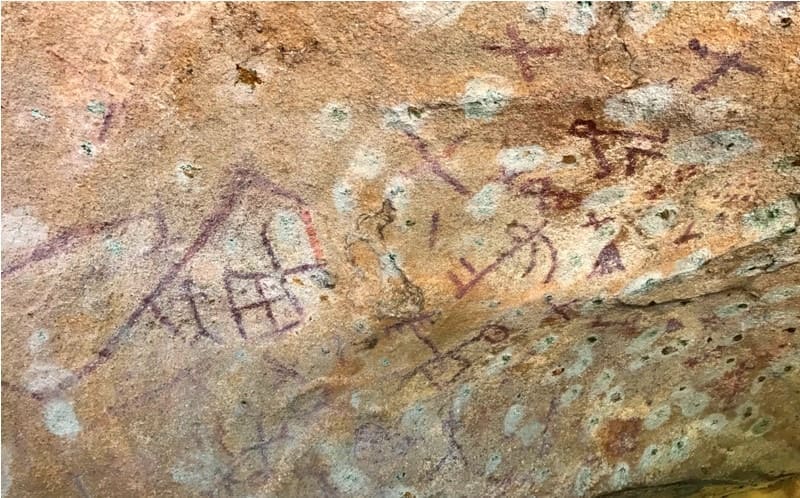
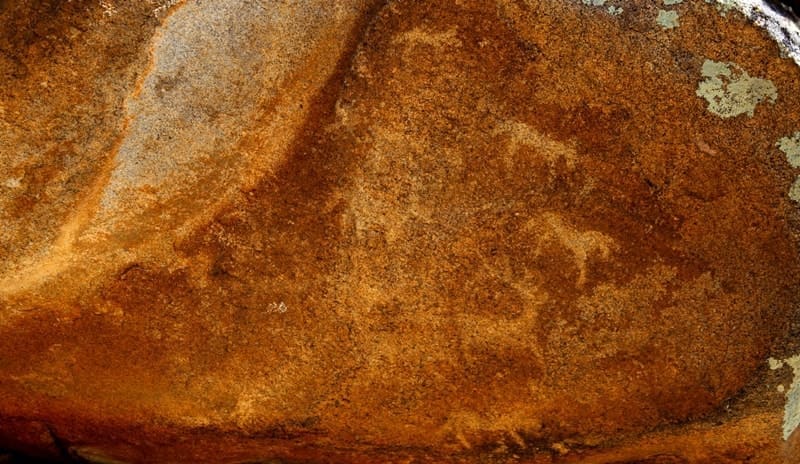
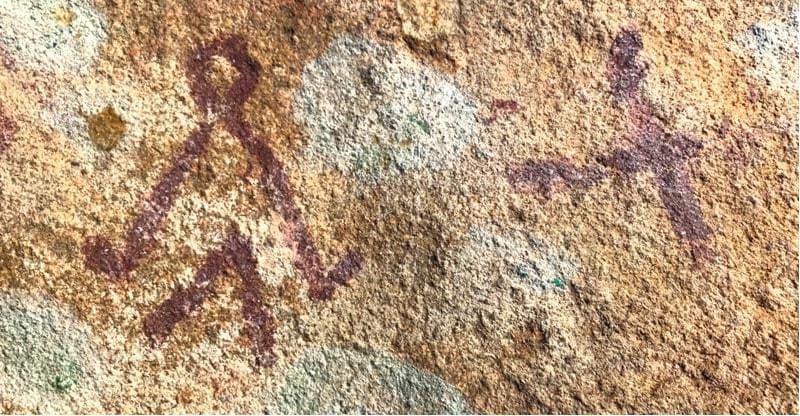
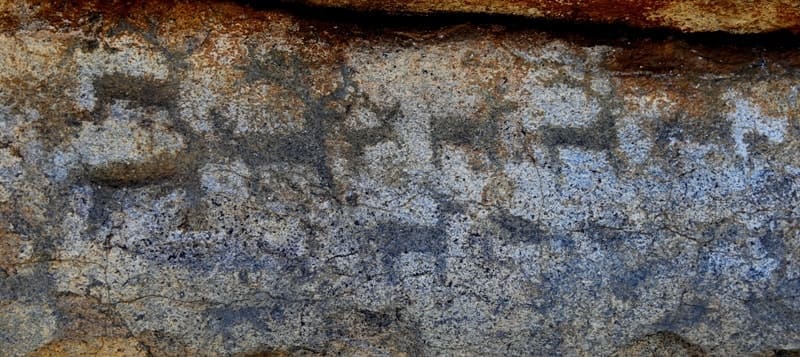
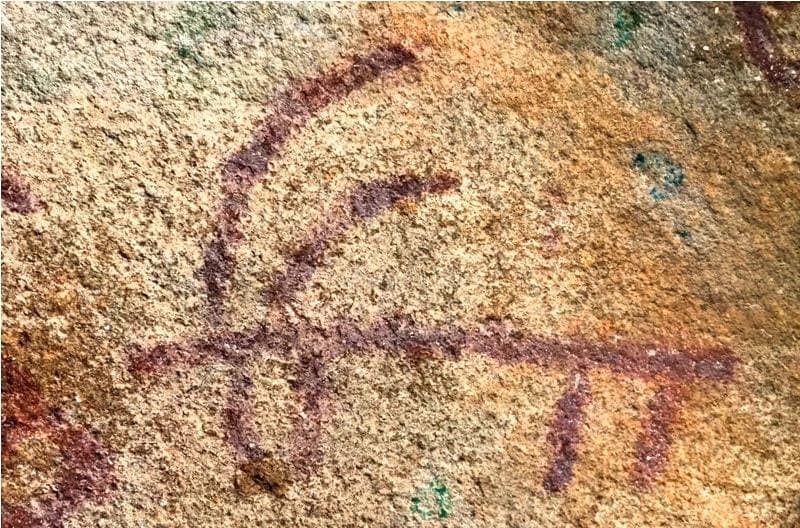
Authority:
“Rock Art Sites in Kazakhstan”. Alexey E. Rogozhinskiy.
Photos by:
Alexander Petrov.







